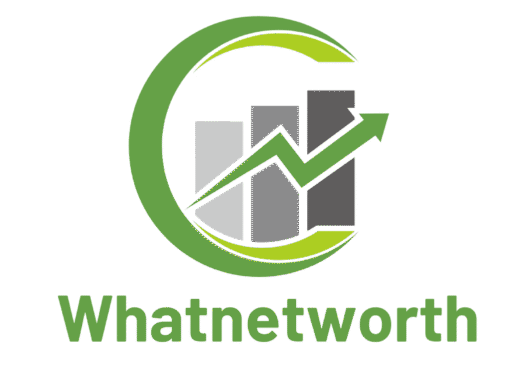Understanding Student Loan Forgiveness in 2025
Student loan forgiveness is a crucial financial relief program designed to assist borrowers in reducing or eliminating their student debt under certain conditions. In 2025, several federal and state programs offer opportunities for debt relief, provided borrowers meet specific criteria. Understanding eligibility, application procedures, and key updates for 2025 will be essential for borrowers seeking financial freedom.
Who Qualifies for Student Loan Forgiveness in 2025?
Eligibility for student loan forgiveness depends on multiple factors, including employment type, repayment history, and loan type. Below are the primary categories of borrowers who may qualify:
1. Public Service Loan Forgiveness (PSLF)
PSLF is designed for borrowers employed in government or non-profit sectors. To qualify in 2025, you must:
- Work full-time for a qualifying employer (federal, state, local government, or 501(c)(3) non-profits).
- Have Direct Loans or consolidate other federal loans into a Direct Loan.
- Make 120 qualifying payments under an income-driven repayment (IDR) plan.
- Submit an Employer Certification Form annually.
2. Income-Driven Repayment (IDR) Forgiveness
Borrowers enrolled in IDR plans may qualify for loan forgiveness after 20 or 25 years of consistent payments. The main IDR plans include:
- Revised Pay As You Earn (REPAYE)
- Pay As You Earn (PAYE)
- Income-Based Repayment (IBR)
- Income-Contingent Repayment (ICR) After the repayment term ends, any remaining balance is forgiven.
3. Teacher Loan Forgiveness
Teachers working in low-income schools for at least five consecutive years may qualify for up to $17,500 in loan forgiveness on Direct Subsidized and Unsubsidized Loans.
4. Perkins Loan Cancellation
Borrowers with Perkins Loans may be eligible for full cancellation over five years of qualifying service in professions like teaching, law enforcement, or public defense.
5. Total and Permanent Disability (TPD) Discharge
Borrowers with a qualifying disability can have their loans discharged through TPD programs, requiring medical documentation or Social Security Administration (SSA) disability status.
6. Borrower Defense to Repayment
If you attended a school that misled or defrauded you, you might qualify for full loan discharge through the Borrower Defense to Repayment program.
How to Apply for Student Loan Forgiveness in 2025
Step 1: Determine Eligibility
Before applying, review your loan type and program-specific requirements to ensure eligibility.
Step 2: Submit Necessary Documentation
- PSLF Applicants: Submit an Employer Certification Form annually through the StudentAid.gov website.
- IDR Forgiveness: Ensure consistent IDR plan payments and update income details yearly.
- Teacher Loan Forgiveness: Submit the Teacher Loan Forgiveness application after five years of service.
- TPD Discharge: Provide medical documentation or SSA confirmation of disability.
- Borrower Defense: File an application with evidence of institutional fraud.
Step 3: Monitor Application Status
Use your Federal Student Aid (FSA) account to track your application and ensure all required steps are completed.
Latest Updates on Student Loan Forgiveness in 2025
New IDR Payment Plan Adjustments
In 2025, revised income-driven repayment plans lower monthly payment caps and expand eligibility for forgiveness.
Expanded PSLF Eligibility
Government efforts have broadened PSLF access by including more nonprofit and contract workers.
Automatic Forgiveness for Some Borrowers
Certain categories, including permanently disabled borrowers and those defrauded by institutions, now qualify for automatic loan forgiveness without submitting an application.
Tax Implications of Loan Forgiveness
Until at least 2025, forgiven student loan amounts are not considered taxable income, preventing unexpected IRS liabilities.
Common Mistakes to Avoid When Applying
- Failing to Certify Employment Annually: Ensure all PSLF-related employment is certified to prevent delays.
- Missing IDR Recertification Deadlines: Forgetting to update income details can result in higher payments or loss of forgiveness eligibility.
- Not Consolidating Non-Direct Loans: Some federal loans must be consolidated before they qualify for forgiveness.
- Ignoring Program-Specific Deadlines: Stay informed about cutoff dates to maximize benefits.
Alternatives If You Don’t Qualify for Forgiveness
If you are ineligible for student loan forgiveness, consider:
- Loan Refinancing: Reducing interest rates through private lenders.
- Employer Repayment Assistance: Some companies offer student loan repayment benefits.
- State-Specific Forgiveness Programs: Many states offer debt relief for public service workers and healthcare professionals.
Final Thoughts
Student loan forgiveness in 2025 offers substantial financial relief for eligible borrowers. By understanding qualification criteria, following application guidelines, and staying updated on program changes, borrowers can maximize their chances of securing loan forgiveness.
